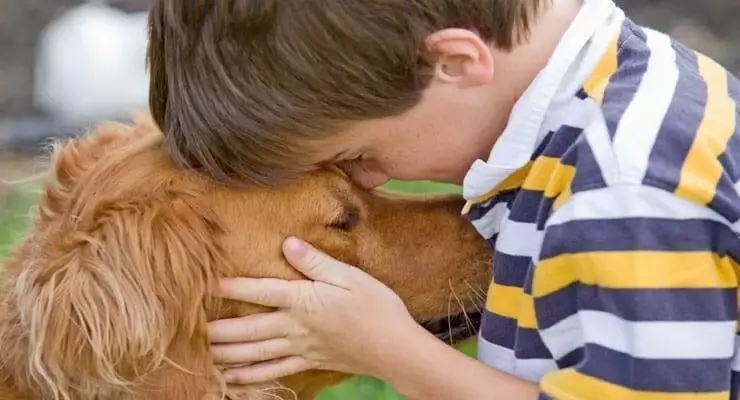Finally, a parenting topic my own kids will agree I know something about: kids and pets. I live with three children, four cats, and one dog. I’m a lifelong animal lover myself. But the real reason my household includes so many pets: they’re essential to good parenting.
There are few moments more validating in the uncertain world of parenting than discovering research that confirms the wisdom of one’s own parenting choices. Just released: a study that backs up my long-held theory that pets are good for kids.
Dr. Anne Gadomski and colleagues at the Bassett Medical Center in New York surveyed 643 kids between 6 and 7. The team found a significant difference in clinical anxiety levels based on whether kids had pets or not. Only 12 percent of children with pet dogs tested positive for anxiety, compared to 21 percent of children without a dog. The caveats are that the study was quite small, the only pets included were dogs, and 96% of the children were Caucasian. More research is needed.
However, Gadomski explains why pets can transform the life of a child in her report in the Center for Disease Control journal Preventing Chronic Disease. Simply put, there’s an ease between children and pets that may not be replicated in any other relationships. “Because dogs follow human communicative cues, they may be particularly effective agents for children’s emotional development…Sometimes [a child’s] first word is the name of their pet. From a mental health standpoint, children often rank pets higher than humans as providers of comfort and self-esteem and as confidants…by reducing anxiety and arousal or enhancing attachment,” they wrote.
Gadomski’s team dug into why dogs, in particular, might benefit kids. Maybe some dogs are especially empathetic with children. But what I’ve seen is that any pet – turtles, fish, a snake, a hamster – can help children develop self-confidence, responsibility and patience. Children are, by definition, far less powerful, far less in control, than the adults in their lives; a friendship with an animal that cannot speak, leave the house or a cage, or assert much power probably provides great solace.
We already had one cat, but my youngest loved dogs with such passion, I feared she’d try to steal the neighbor’s. So when she was about three, we adopted a Black Lab-Shepherd mix from our local animal shelter. My daughter slept with Chief, built exercise courses in the house for him, and spent one summer teaching him how to take the waves at the beach without getting rolled.
I then started a new family tradition: when each of my kids became a teenager, they could get their own cat. My son inspired me, because as a competitive basketball, soccer, and tennis player, he was on his way to developing a 24/7 tough exterior that troubled me. Caring for the tiny orange kitten he picked out softened my son just enough to assuage my fears.
Toughness wasn’t his younger sister’s problem at 13, but she simply didn’t like or trust animals the way the other kids did. That changed when she picked out a tortoise shell kitten and raised her to be the sweetest, calmest pet in the house.
The dog lover, when she turned 13, refused to get a kitten. Instead she picked out an adult male tuxedo cat at the shelter that she though no one else would take. These days, sometimes I find all the cats and the dog sleeping in her bed.
Pets are a great deal of work, and their food and medical care can be costly. They also make a family take a painful risk: pets may die while your child is still too young to understand death. So there are downsides for parents pondering combining pets and kids. But in terms of developing character and deep compassion in children, I’ve found no better or simpler substitute.





